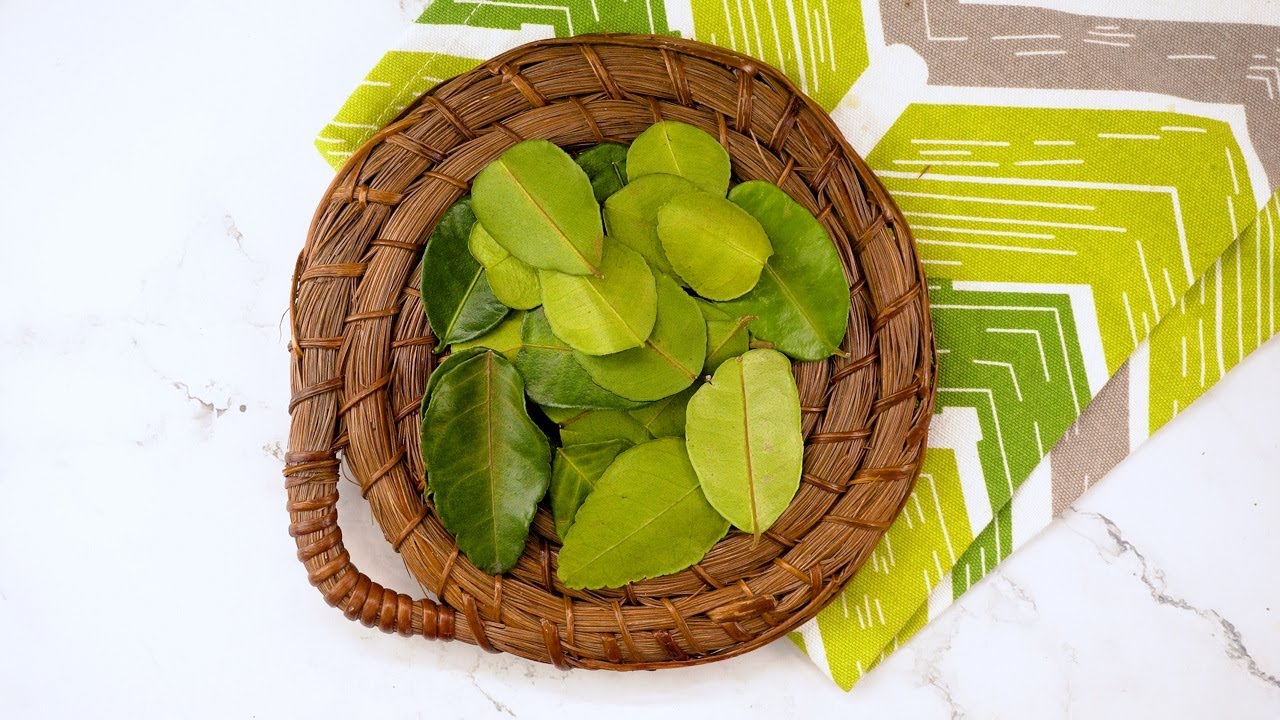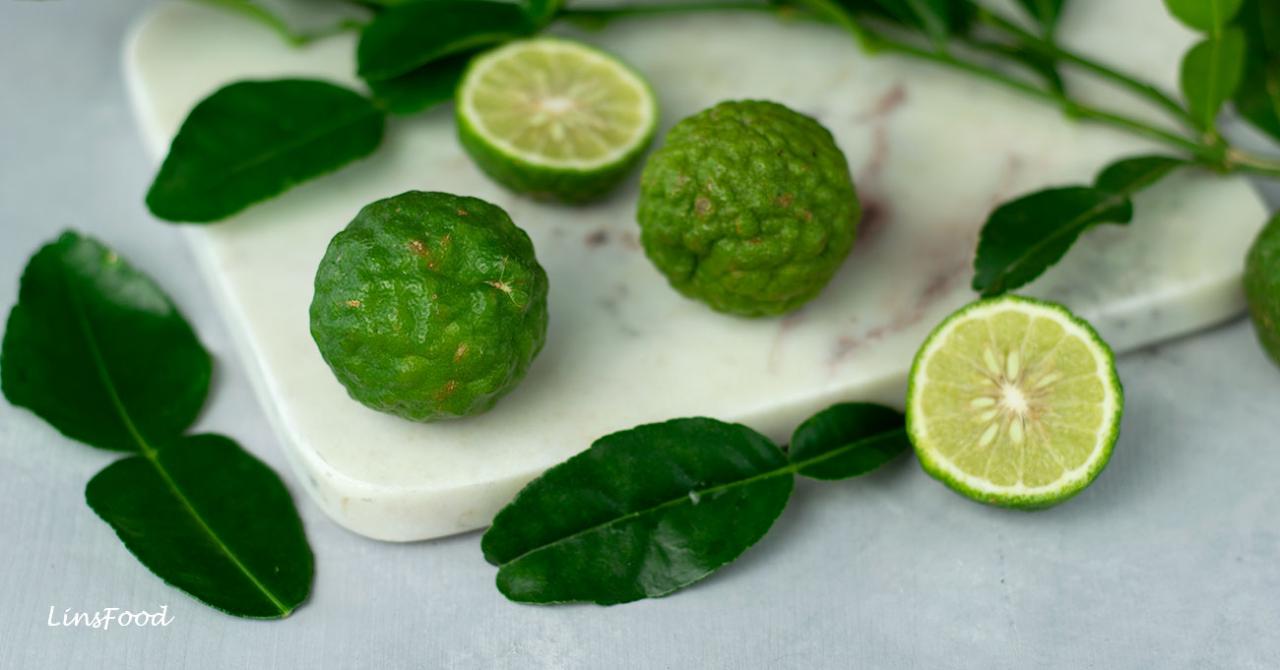How to Incorporate Kaffir Lime Leaf into Your Meals: Expert Advice and Recipes – the fragrant, citrusy aroma of Kaffir lime leaf is a defining characteristic of Southeast Asian cuisine. This unique ingredient, with its distinct flavor and numerous health benefits, can elevate your dishes from ordinary to extraordinary.
From traditional Thai curries to refreshing salads, Kaffir lime leaf adds a complex layer of flavor that tantalizes the taste buds. In this guide, we’ll explore the culinary versatility of this remarkable ingredient, offering expert advice and delicious recipes to inspire your next culinary adventure.
Beyond its culinary applications, Kaffir lime leaf has a rich cultural significance and a history steeped in traditional medicine. Its aromatic properties have been used for centuries in natural remedies, aromatherapy, and even skincare. Whether you’re a seasoned chef or a culinary novice, this guide will equip you with the knowledge and inspiration to unlock the full potential of Kaffir lime leaf in your kitchen and beyond.
Introduction to Kaffir Lime Leaf

The Kaffir lime leaf, also known as makrut lime leaf, is a fragrant and versatile ingredient that adds a unique citrusy zest to Southeast Asian cuisine. The leaves are known for their distinct aroma and flavor profile, which combines a bright, citrusy tang with subtle hints of floral and herbal notes.
Cultural Significance of Kaffir Lime Leaf
Kaffir lime leaves have a rich history and cultural significance in Southeast Asian cuisine. They are an essential ingredient in many traditional dishes from Thailand, Vietnam, Malaysia, Indonesia, and other countries in the region. The leaves are often used to infuse soups, curries, stir-fries, and marinades, adding a distinct and complex flavor that is both refreshing and aromatic.
While exploring the fragrant world of kaffir lime leaves, it’s easy to find inspiration for your culinary creations. Their unique citrusy aroma can elevate any dish, and their vibrant green color adds a touch of visual appeal. Just as you might decorate your home for the season with beautiful fall foliage, you can also create a stunning centerpiece for your table with a DIY leaf garland, as shown in this guide.
The same spirit of creativity and natural beauty can be applied to your cooking, incorporating kaffir lime leaves to add a touch of magic to your meals.
Health Benefits of Kaffir Lime Leaf
Kaffir lime leaves are not only a culinary delight but also possess a range of health benefits. The leaves are a good source of vitamin C, an antioxidant that helps boost the immune system and protect against cell damage.
They also contain volatile oils, such as linalool and citral, which have anti-inflammatory and antimicrobial properties. These properties contribute to the leaves’ potential benefits for digestive health, skin health, and overall well-being.
Culinary Applications of Kaffir Lime Leaf

Kaffir lime leaves, with their unique aroma and flavor, are a staple ingredient in Southeast Asian cuisine, adding a distinct citrusy and slightly herbal note to various dishes. Their versatility allows them to be used in diverse cooking methods, enhancing the taste and complexity of the final product.
Common Dishes Incorporating Kaffir Lime Leaf, How to Incorporate Kaffir Lime Leaf into Your Meals: Expert Advice and Recipes
Kaffir lime leaves are widely used in a variety of dishes, lending their signature flavor and aroma to both savory and sweet creations. They are commonly found in Thai, Vietnamese, Indonesian, Malaysian, and Laotian cuisine, often used in curries, soups, stir-fries, and marinades.
Dish |
Cuisine |
Key Ingredients |
Kaffir Lime Leaf Usage |
|---|---|---|---|
Tom Kha Gai (Thai Coconut Soup) |
Thai |
Coconut milk, chicken, galangal, lemongrass, mushrooms |
Infused in the broth, adding a citrusy aroma and flavor |
Rendang (Indonesian Beef Curry) |
Indonesian |
Beef, coconut milk, lemongrass, galangal, turmeric, chilies |
Added whole to the curry during cooking, lending a fragrant aroma and subtle citrusy note |
Green Curry (Thai Curry) |
Thai |
Coconut milk, green chilies, basil, fish sauce, kaffir lime leaves |
Added whole to the curry paste, contributing a citrusy and herbaceous flavor |
Laksa (Malaysian Noodle Soup) |
Malaysian |
Noodles, coconut milk, lemongrass, galangal, shrimp paste, chilies |
Infused in the broth, providing a distinct citrusy aroma and flavor |
Kaffir Lime Leaf Usage in Various Cooking Methods
The versatility of kaffir lime leaves allows them to be incorporated into dishes using various cooking methods, each contributing a unique dimension to the final flavor profile.
Steaming
Steaming kaffir lime leaves is a popular method in Southeast Asian cuisine, allowing their delicate flavor and aroma to infuse into the dish without overpowering it. This method is commonly used for steaming fish, chicken, or vegetables, where the leaves are added to the steamer basket, imparting a subtle citrusy and herbaceous note.
Sautéing
Sautéing kaffir lime leaves, often with other aromatics like garlic, ginger, and chilies, adds a fragrant and complex flavor to dishes. This method is commonly used in stir-fries, where the leaves are added towards the end of cooking, releasing their aroma and enhancing the overall flavor profile.
Infusing
Infusing kaffir lime leaves in broths, sauces, or marinades is a common practice, allowing their unique flavor and aroma to permeate the liquid. This method is particularly effective in dishes like soups, curries, and marinades, where the leaves are simmered in the liquid, imparting a distinct citrusy and herbaceous note.
Garnishing
Adding kaffir lime leaves as a garnish adds a visual appeal and a final burst of flavor to dishes. This method is often used in soups, curries, and salads, where the leaves are added towards the end of cooking or just before serving, providing a fragrant and refreshing touch.
Expert Advice for Using Kaffir Lime Leaf
Unlocking the full flavor potential of Kaffir lime leaves requires a discerning approach to selection, storage, and preparation. Following these expert tips will elevate your culinary creations and ensure you’re making the most of this aromatic ingredient.
Just like a lush, thriving ivy garden can be easily cultivated with simple propagation tricks, How to Create an Ivy Wonderland with Simple Propagation Tricks , so too can you effortlessly add a burst of citrusy fragrance and zest to your meals.
With the right guidance, incorporating kaffir lime leaf into your dishes is a simple and rewarding process, adding a touch of exotic flair to your culinary creations.
Selecting Fresh Kaffir Lime Leaves
The quality of your Kaffir lime leaves directly impacts the flavor of your dish. Here’s what to look for when selecting fresh leaves:
- Color:Choose leaves that are a vibrant, deep green color. Avoid leaves that are yellowed or brown, as this indicates they are past their prime.
- Texture:The leaves should feel firm and slightly leathery to the touch. Avoid leaves that are wilted or limp.
- Aroma:Fresh Kaffir lime leaves should have a strong, citrusy aroma. If the aroma is faint or absent, the leaves may be stale.
Storing Kaffir Lime Leaves to Preserve Freshness
Proper storage is essential for maintaining the freshness and flavor of Kaffir lime leaves.
- Refrigeration:Store fresh Kaffir lime leaves in a plastic bag or airtight container in the refrigerator. They will stay fresh for up to a week.
- Freezing:For longer storage, freeze the leaves in a freezer-safe bag. They can be frozen for up to 3 months. To use frozen leaves, simply add them directly to your dish without thawing.
Extracting Maximum Flavor from Kaffir Lime Leaves
Kaffir lime leaves have a distinct, aromatic flavor that adds complexity to dishes. To maximize their flavor potential, use these techniques:
- Bruising:Gently bruise the leaves with the back of a knife or your fingers before adding them to your dish. This releases their essential oils and intensifies their aroma.
- Infusion:Steep Kaffir lime leaves in hot water or broth for a few minutes to infuse the liquid with their flavor. This technique is commonly used in soups, curries, and stews.
- Stir-frying:Stir-frying Kaffir lime leaves with other ingredients releases their aroma and adds a subtle citrusy flavor.
Substituting Kaffir Lime Leaves
While Kaffir lime leaves offer a unique flavor profile, there are some substitutes that can provide a similar citrusy taste.
- Lime Zest:The zest of a regular lime can provide a similar citrusy flavor to Kaffir lime leaves. However, it lacks the distinct aroma and flavor of Kaffir lime leaves.
- Lime Juice:Lime juice can be used to add a citrusy tang to dishes, but it won’t provide the same aroma or flavor as Kaffir lime leaves.
- Lemongrass:Lemongrass has a similar citrusy aroma and flavor to Kaffir lime leaves. However, it is a more robust flavor and may not be suitable for all dishes.
Recipes Featuring Kaffir Lime Leaf
Kaffir lime leaf is a versatile ingredient that can elevate the flavor of a wide range of dishes. Its unique aroma and citrusy taste add depth and complexity to both sweet and savory recipes. Here are a few examples of how you can incorporate kaffir lime leaf into your culinary creations.
Traditional Thai Green Curry
Thai green curry is a popular dish that features kaffir lime leaf as a key ingredient. The leaves contribute a refreshing citrusy flavor and a subtle aroma that complements the other spices in the curry paste. Here is a recipe for a traditional Thai green curry:
Ingredients
- 1 tablespoon vegetable oil
- 1 onion, chopped
- 2 cloves garlic, minced
- 1 inch ginger, minced
- 1 green chili, finely chopped (optional)
- 1 tablespoon green curry paste
- 400 ml coconut milk
- 1 cup chicken or vegetable broth
- 1 cup chopped vegetables (such as bell peppers, zucchini, and eggplant)
- 200g chicken or tofu, cut into bite-sized pieces
- 4 kaffir lime leaves, torn
- Salt and pepper to taste
- Fresh cilantro, for garnish
Instructions
- Heat the oil in a large pot over medium heat. Add the onion and cook until softened, about 5 minutes.
- Add the garlic, ginger, and chili (if using) and cook for another minute, stirring constantly.
- Stir in the green curry paste and cook for 1 minute, until fragrant.
- Pour in the coconut milk and chicken broth. Bring to a simmer and cook for 5 minutes.
- Add the vegetables and chicken or tofu. Cook until the vegetables are tender and the chicken or tofu is cooked through, about 10 minutes.
- Stir in the kaffir lime leaves and cook for another minute.
- Season with salt and pepper to taste. Garnish with fresh cilantro and serve with rice.
Refreshing Southeast Asian Salad
Kaffir lime leaf can add a burst of citrusy flavor to a refreshing salad. The leaves can be used fresh or dried, and they pair well with a variety of vegetables and herbs. Here is a recipe for a Southeast Asian salad featuring kaffir lime leaf:
Ingredients
- 1 cup shredded cabbage
- 1/2 cup shredded carrots
- 1/4 cup chopped cilantro
- 1/4 cup chopped mint
- 1/4 cup chopped peanuts
- 2 kaffir lime leaves, thinly sliced
- 1/4 cup lime juice
- 2 tablespoons fish sauce
- 1 tablespoon sugar
- 1 tablespoon water
- Pinch of red pepper flakes (optional)
Instructions
- In a large bowl, combine the cabbage, carrots, cilantro, mint, and peanuts.
- In a small bowl, whisk together the lime juice, fish sauce, sugar, water, and red pepper flakes (if using).
- Pour the dressing over the salad and toss to coat.
- Garnish with the kaffir lime leaves and serve immediately.
Fragrant Kaffir Lime Leaf Infused Beverage
Kaffir lime leaf can be used to create a fragrant and refreshing beverage. The leaves can be infused in hot water to make a tea or added to a cocktail for a unique twist. Here is a recipe for a simple kaffir lime leaf infused tea:
Ingredients
- 4 cups water
- 4 kaffir lime leaves, torn
- Honey or sugar to taste
Instructions
- Bring the water to a boil in a saucepan.
- Add the kaffir lime leaves and reduce the heat to low. Simmer for 5 minutes.
- Remove from the heat and let steep for 10 minutes.
- Strain the tea into cups and sweeten with honey or sugar to taste.
Kaffir Lime Leaf Beyond the Kitchen: How To Incorporate Kaffir Lime Leaf Into Your Meals: Expert Advice And Recipes
The fragrant and flavorful kaffir lime leaf, a staple in Southeast Asian cuisine, has a history of use extending far beyond the kitchen. Its versatility and medicinal properties have led to its integration into traditional remedies, aromatherapy practices, and even skincare applications.
Traditional Medicine and Natural Remedies
Kaffir lime leaf has been used for centuries in traditional medicine systems, particularly in Southeast Asia. Its therapeutic properties are attributed to its rich concentration of essential oils, antioxidants, and other bioactive compounds.
- Anti-Inflammatory Properties:Kaffir lime leaf contains compounds like limonene and linalool, known for their anti-inflammatory effects. These properties can be helpful in reducing inflammation associated with conditions like arthritis, digestive issues, and skin irritations.
- Antioxidant Activity:The antioxidants in kaffir lime leaf can help protect cells from damage caused by free radicals, which are linked to chronic diseases. This antioxidant activity may contribute to overall health and well-being.
- Digestive Support:Kaffir lime leaf has been traditionally used to aid digestion. Its essential oils may help stimulate digestive enzymes and alleviate symptoms like bloating and indigestion.
Aromatherapy Applications
Kaffir lime leaf essential oil, extracted from the leaves, is widely used in aromatherapy. Its fresh, citrusy scent is believed to have calming and uplifting effects on the mind and body.
- Stress Relief:The aroma of kaffir lime leaf is often used to reduce stress and anxiety. Its calming properties can help promote relaxation and a sense of well-being.
- Mood Enhancement:Kaffir lime leaf essential oil can be used to uplift mood and combat feelings of depression. Its stimulating and energizing properties can help improve focus and concentration.
- Sleep Improvement:The calming scent of kaffir lime leaf can help promote restful sleep. It may aid in reducing insomnia and improving sleep quality.
Skincare Applications
Kaffir lime leaf extracts and essential oils have found their way into skincare products due to their potential benefits for the skin.
- Anti-Acne Properties:Kaffir lime leaf’s antibacterial and anti-inflammatory properties can help fight acne-causing bacteria and reduce inflammation associated with breakouts.
- Skin Brightening:The antioxidants in kaffir lime leaf may help reduce hyperpigmentation and even skin tone. Its application in skincare products can contribute to a brighter and more radiant complexion.
- Anti-Aging Effects:The antioxidants in kaffir lime leaf may help protect skin from environmental damage and premature aging. Its application can help maintain skin elasticity and reduce the appearance of wrinkles.
Last Word

From the fragrant aroma that fills your kitchen to the refreshing taste that tantalizes your palate, Kaffir lime leaf is an ingredient that deserves a place in your culinary repertoire. With its versatility, health benefits, and cultural significance, it’s a culinary gem waiting to be discovered.
So, embrace the unique flavors of Southeast Asia, experiment with new recipes, and unlock the full potential of Kaffir lime leaf in your own kitchen.
FAQ Overview
Where can I find fresh Kaffir lime leaves?
Fresh Kaffir lime leaves are typically found in Asian grocery stores or specialty markets. You may also be able to find them at some well-stocked supermarkets.
Can I substitute Kaffir lime leaves with another ingredient?
While there’s no perfect substitute for Kaffir lime leaves, you can try using lime zest or lime juice for a similar citrusy flavor. However, the unique aroma and flavor of Kaffir lime leaf will be absent.
How long do Kaffir lime leaves last?
Fresh Kaffir lime leaves can last for about a week in the refrigerator if stored properly. Wrap them in a damp paper towel and store them in an airtight container.
Are there any health benefits associated with Kaffir lime leaves?
Yes, Kaffir lime leaves are a good source of antioxidants and have been traditionally used for their potential anti-inflammatory and antimicrobial properties.
